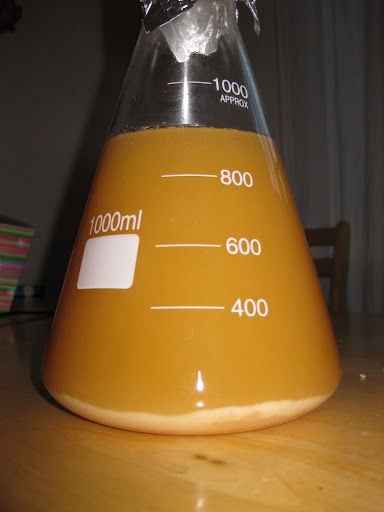dub
Active Member
I am planning to brew a Racer 5 clone tomorrow and am wondering how i can tell if my yeast starter is ready.
This morning, i made a starter using 1 Cup Light DME and 900ml of water and some yeast nutrient (Per morebeer.com's recipe). I cooled it to 70 degrees and pitched in my vial of White Labs WLP051 California V yeast as per the recipe i plan to follow. After i pitched the yeast i shook the living crap out of it to aerate it and soon left the house to go shopping with the wife. I left the house around 11am and returned around 8pm. When i came home, there was a yeast cake (or so i think) on the bottom of the flask. It was noticeably different in color. I read that active fermentation is usually done within the first few hours. I've since shaken the slurry, but i want to make sure the yeast will be ready to pitch tomorrow. How can i tell its ready?
This morning, i made a starter using 1 Cup Light DME and 900ml of water and some yeast nutrient (Per morebeer.com's recipe). I cooled it to 70 degrees and pitched in my vial of White Labs WLP051 California V yeast as per the recipe i plan to follow. After i pitched the yeast i shook the living crap out of it to aerate it and soon left the house to go shopping with the wife. I left the house around 11am and returned around 8pm. When i came home, there was a yeast cake (or so i think) on the bottom of the flask. It was noticeably different in color. I read that active fermentation is usually done within the first few hours. I've since shaken the slurry, but i want to make sure the yeast will be ready to pitch tomorrow. How can i tell its ready?




